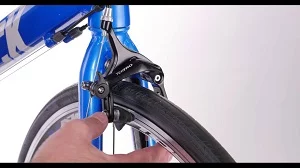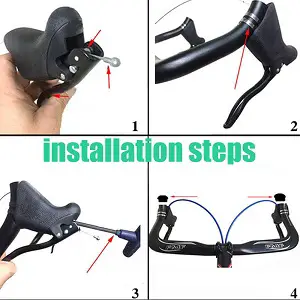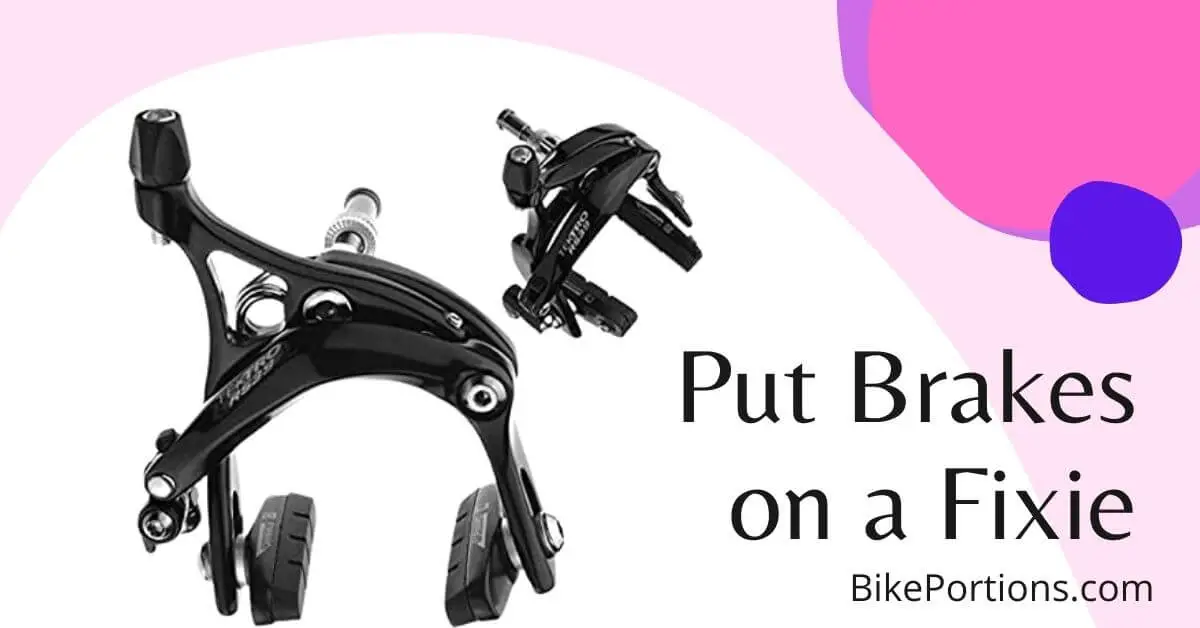Can I Put Brakes on a Fixie?
When you ride a fixie, there is nothing to slow you down. This might be an asset when the pavement is smooth and the wind is behind your back, but it can also be your worst nightmare if you start losing traction on wet or slippery pavement. And if that’s not enough for you to worry about, do you know what happens when a fixie hits a curb? The bike stops abruptly and can throw its rider off balance or land them on their head. So, can you put brakes on a fixie? This is what you need to know about.
Contents
How fixie Brakes Work
The fixie brake is an interesting piece of bicycle technology. The brakes are applied by grabbing the tire and pulling it forward or backward. Or by squeezing the lever on the handlebars to create friction on the tire. The cyclist’s weight on the rear of the bike creates enough pressure to slow down.
When using this type of braking system, it is important to anticipate stopping well in advance, as there is no way to stop suddenly like with a regular bike.
Types of Bike Brakes
Bike brakes are an essential safety feature for any cyclist. The type of brakes you choose will depend on your level of experience, the terrain you’re riding on, and what you’re using them for.
There are three major types of bike brakes that cyclists use:
– Rim Brakes: These type of brakes attaches to the wheel rim and act like an anchor. They provide optimal stopping power in wet conditions because there’s no transfer of moisture through the brake pads.
If you are looking for a way to put brakes on your fixie. But feel like the standard brakes are not right for you, there are other options. You can buy custom brake pads, or cable pulls to place on the frame in order to use traditional brakes. So, the answer of your question is, yes you can put custom brakes on a fixie.
Why You need to put Brakes on a Fixie
A Fixie is a bicycle that does not have the ability to coast. Meaning the pedals are always in motion. This can be problematic when trying to stop or slow down. A fixie without brakes has caused many accidents in history. And has even brought down professional athletes in the Tour de France. Brakes are often added to fixies to prevent these accidents from reoccurring.
What Types of Brakes Can put on a Fixie?
Fixies are a type of bike that can’t use a rear brake. Because it doesn’t have a back tire to slow the bike down. However, there are a few options for brakes on a fixie that can be added to provide safety and control. There is no single option that’s the best option. But it’s important to consider cost, weight, durability, and ease of installation before making a decision.
Cost of Adding Brakes to a Fixie
People convert their old bikes to fixies because they are cheap and stylish. But, for safety’s sake, many bicyclists have added brakes. The problem is that adding a brake system can sometimes double the cost of a fixie. For a low-cost fixie conversion, the average bicycle will set you back $200-$300. Brakeless conversions start at around $125 and then add on the price of brakes from there.
How to put brakes on a fixie?
Putting a brake on a fixie is not as hard as it may seem. There are a few tricks that will make your job easier. Although you can use v-brakes or calipers, here we will go over how to use side-pull brakes.
Whether you are an experienced rider or a beginner, learning how to put brakes on a fixie will help make your biking experience safer and easier. Fixies are also known as single–gear bikes because they only have one gear the pedal rotates forward so the next rotation is powered by the muscles.
The biggest misconception about How to Put Brakes on a Fixie is that it needs special parts. Although, how to Put Brakes on a Fixie may seem impossible, with the right tools and some elbow grease you can easily learn How to Put Brakes on a Fixie.
Here we are sharing the step-by-step process to put brakes on a fixie. Hope it will help you.
Step 1 – Gathering the Gear
The first step in How to Put Brakes on a Fixie is to gather your tools. You will need an adjustable wrench, screwdriver, side pull brakes and brake lever.

Step 2 – Remove the tire
The next step in How to Put Brakes on a Fixie is removing the tire. To do this, you have to remove the axle nuts with an adjustable wrench. Once the nuts are removed pull the wheel straight out of the frame and slide off your old brake arm.
Step 3 – Install the brake arm
Installing the new brake for a Fixie is simple. You will need to slide your new arm into place over the end of the axle and tighten it until it fits snugly.
Step 4 – Adjusting Your Brakes
Your new brake should be completely installed. To adjust your brakes, simply twist the brake cable around the end of the caliper arm until you are satisfied with how far it comes off. Use an Allen wrench to tighten up any screws that are loose. Once you have tested your brakes and made sure they are working properly put your wheel back on and tighten the axle nuts.

Step 5 – Test Your New Brake System
To test your new brake system, you should go ride it around your neighborhood. However, start off slowly because if the brakes are installed incorrectly it will be extremely hard to stop. If everything is okay, then you have successfully installed brakes on your fixie.
If you are still having trouble with How to Put Brakes on a Fixie. Contact your local bike shop for step-by-step repair assistance. Because this article is not intended as a step-by-step process to put brakes on a fixie.
Adjusting Brakes vs. Replacing Brakes
I ride a fixed-gear bicycle. It’s not because I like boys or whatever, it’s because they’re fun as hell and versatile. Adjusting brakes on a fixie is simple, and there are only two things that need to be done:
1) Adjust the brake pads so that they just lightly touch the rims when turned all the way up
2) Adjust the barrel adjusters on your brake arms so that they provide adequate tension.
That’s it! Adjusting brakes properly makes them more responsive and reduces stress on the wheel rims (which, if not adjusted correctly, will wear out pretty damn fast). Replacing brakes for a fixie is actually simpler than you think because there are only two types of brake arms you have to worry about:
1) Brake arms with a spring or other type of tension adjuster on them. Adjust the tension so that it provides adequate stopping power, but doesn’t put your wheel in jeopardy (Remember—if the brakes touch when turned all the way up, they’re too close together. Adjust accordingly).
2) A caliper brake arm. These are usually found on bikes with drop bars, so if you have a standard road bar or some other type of ergonomic handlebar, this is probably what your bike has. Adjust the pads so that they lightly touch the rims when turned all the way up (like in the above sentence).
That’s all there is to it. Adjusting brakes or replacing them when you have a fixed-gear bike is pretty painless, but if you’re still confused, just post in the comments below!
Final Thoughts
Adjusting brakes incorrectly can damage your wheel rims and/or brake pads or ruin your fixie bike. Adjusting or replacing brakes on a fixie may void your warranty and/or result in damage to your bike if done incorrectly. It also may result in fatal injuries to the rider if done incorrectly. Adjusting brakes on a fixie is simple, but it’s not as simple as adjusting brakes on a freewheel bicycle.





![Adding Gears to a Fixie [An Ultimate Guide]](https://bikeportions.com/wp-content/uploads/2021/10/adding-gears-to-a-fixie-1-768x402.jpg)

